After going to the 2013 Book Expo earlier this month, I noticed something peculiar about kids and YA media. While I was there looking around at booths and each publishing house’s lines, there seemed to be two different approaches towards entertaining and educating our children and young adults and essentially how they treat them as audiences.
One was very commercial and very simplistic, with overtly candy-colored extremely simple children’s picture books, cute but with no ground breaking content. I also saw a lot of series enforcing the fluffy “princess” and gender binary enforcing stereotypes for girls (not to mention lines dedicated to the princessification of existing non-Princessy properties like Dora The Explorer) and other gimmicky series that are obviously adult writers and round-table editorial trying much too hard to appeal to youth e.g. modern slang and lingo “Lol, text speek”. This bleeds into often just by observation, novels for teens overtly riding the coat-tails of Hunger Games and Twilight brand teen sci-fi or supernatural romance with overt covers that scream”Yeah this is exactly what we’re going for”.
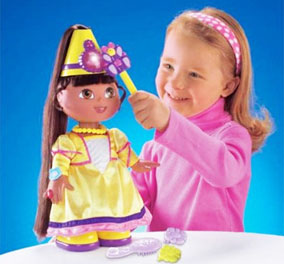
Was this really necessary? What are your thoughts. Let me know!
The other half are more serious and whimsical; reprints of older children’s books from the first half the of the twentieth-century which put more emphasis on the illustrations, or new books with interesting spins on their presentation with equally unique art, basic almost universal story premises and generally unisex appeal,wackiness and relatability. These booths if they had fairytale books those books often (not always) had illustrations that were not pink and purplefied and dipped in sugar to the extent it is seems like its “meant” for girls in the commercial sense, and instead take on a darker more earth and jewel-toned color palettes. They were simply telling stories and presenting them in an overtly artistic manner.
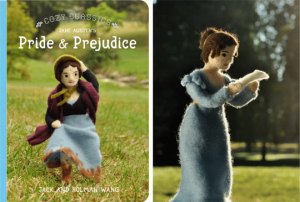
Cozy Classics. Take note of this, we’ll be talking about this series A LOT.
It was like this from publisher to publisher and it was just interesting to note the differences to see who they were aiming for in terms of market and demographics.
Now this is not to say overtly candy colored, simple works are bad per se, they are quite allowed, and the fluffy pink world of Disney and Barbie and Rainbow Brite aren’t inherently bad either, they’re just not. Girls and boys can like hyperfeminine products and stories that’s fine. Sailor Moon and the new My Little Pony: Friendship is Magic television series and their corresponding merchandise proves that something can be sugary or candy colored and teach really good things and be exemplary role models. Femininity isn’t bad. When the pink-sugar world is the only one you offer girls and you are dipping properties that shouldn’t necessarily need to be “girlified” is when it’s problematic.What do you readers thinks?
This is not actually a big criticism of sexist binary enforcement though, despite my attention to it. It’s just important to note. Stepping back and at least noticing the divide made me think about how people see and approach or perceive children and general, and how the products they are producing reflect that perception. I thought about all the different books I saw, and then thought about cartoon series I saw growing up (many like Courage The Cowardly Dog, The Powerpuff Girls, Rugrats, among others were smart and taught really good lessons without being overtly preachy or heavy-handed) and then animated films that are designated for family or for children.
I decided overall that a great deal of adults today underestimate overall the intelligence, sophistication and overall perceptive nature of kids and opt for simpler almost “junk food” equivalent media for them when children can understand and accept much more sophisticated fare then they are often given. People are also not creating fare that is challenging or fresh that allow kids that participation, at least not enough. This is destroying tons of creative opportunity and undermining our kids’ experiences and dictating tastes. We need good family, children and YA entertainment.
I thought about this in regards to others venues in particular the booting of children from comic book demographics and in particular DC Comics. DC Comics’ insistence to keep a particular (adult) demographic for their comic line despite all their merchandise; toys and bedsheets, clothes and even more toys are being mostly advertised for children. Something is fundamentally wrong if a child cannot read Superman. The only book currently at DC Comics if your child, teen or adult really anyone who is a Batman fan or just likes good things that I personally could recommend is the digital Lil’ Gotham comedy series. That’s it. Pretty much anything else in the now nearing two year old line is not particularly good for anyone. Their recent choice to cancel Superman Family Adventures or their general prudence when it comes to making more animated television series or branch out into different mediums is also a cause for concern. Especially when you can easily turn on the TV, go to youtube, Netflix and Hulu from a laptop, tablet and TV and find a cartoon show or film to watch or game to play instead of reading their material. Granted, both of Warner Bros recent animated ventures with Young Justice and Green Lantern The Animated Series were for an older demographic and while sophisticated did not find their needed footing and audience. I have long bemoaned that Ben Caldwell’s Wonder Woman from Wednesday Comics feature from a few years ago would be excellent Wonder Woman television series and that the Shazam family franchise would lend itself well to animated fare.

Perfection.
Again, wat do you think? Are we underestimating kids? Is what we’re providing them the right media?
I’ll continue my thoughts next week, where I’ll talk about cartoons and other children’s media that are doing it right (For example, Adventure Time and Gravity Falls.)
Until next time,
Max Eber
Staff Writer/The Doctor
max@ihogeek.com
Twitter: @maxlikescomics


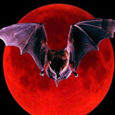
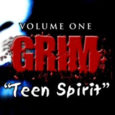



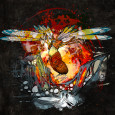
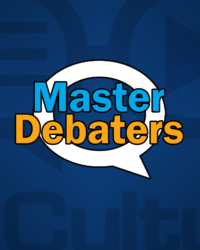


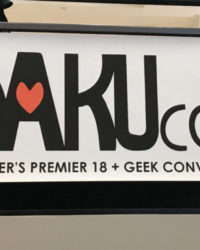




Good read Max. I’ll chime in here since I’ve been doing this Mom thing for 11 years. One thing I’ve noticed with my own girls is that (and this may sound weird from a movie geek like me) avoid television almost entirely their first two or three years. Family movie night and the occassional after school movie for older. Instead, we hover at the book store and let the read as much as they want and they almost always walk out with a book. This way the worries about the over exposure of what you called “gender stereotypes” have a softer effect. Plus, I show them what else is out there that we can all enjoy together. My girls love princesses (Merida, mostly since we love archery), but read about the real history of monarchs.They also love dragons, and hobbits and jedis and superheroes and poems by Poe and Frost. Lately, my 11-year-old can’t get enough science fiction and fantasy and my 3-year-old is obsessed with dinosaurs (they also both want to be Time Lords as well). The key is parents should be available as much as possible to show them the world and let them read about it. Don’t rely on what is laid before them by the book or DVD seller. This will help them make better choices on their own. I am done rambling. Again, great story Max.